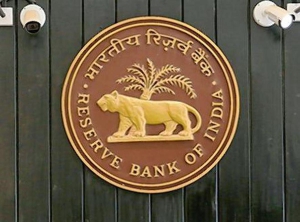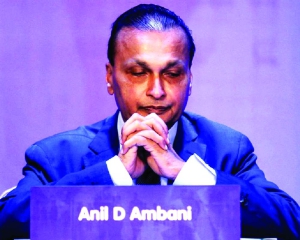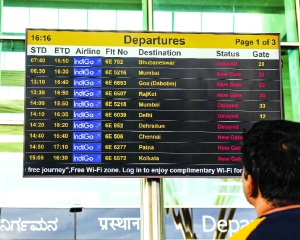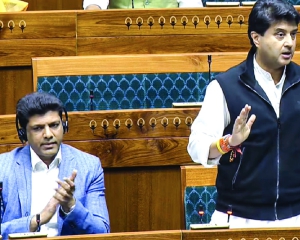Naman narmada
Publisher- Alok Mehta
Author- Shubhi, Rs 1,495
Mythology, history, poetry — all have their own versions of River Narmada. One of the longest rivers in India and the backbone of many civilisations, Goddess Narmada now has a book dedicated to her. An excerpt:
Narmada is the resounding river whose beauty and pellucid glow sooth all forms of life and the nature itself. The Ganges is considered to be a form of knowledge, as sages attained knowledge on its banks. The Yamuna is considered to be a symbol of love because love and devotion flourished at its banks. And, Narmada is considered to be a sacred river that espouses the sense of Tapasya and joy. In Vedas and Puranas, Narmada is also mentioned as ‘Reva’. Mayur Kalp of the Reva section of Skanda Purana gives description of the origin of Narmada and those words truly reflect the properties of Reva. It says: ‘Reva’ is creating its own existence through its rising and dancing waves.
Not only famous historian Vasudev Sharan Agarwal but famous Sanskrit poet Kalidasa, too, has detailed in epic ‘Raghuvansham’ the beauty of Reva-Narmada, breaking the stones of Vindhyachal and flowing in hundreds of streams. In ancient literature Narmada has been called as Anjana, Ranjana, Surana, Mandakini, or Trikuta as well. The popularity and reverence accorded to it have resulted in some rivers flowing in other parts of the country being called by similar names.
From ancient Sanskrit poets to the 21st century contemporary writers, everyone has depicted Vindhyachal and Narmada in most alluring forms by linking them with folk culture, society and development. Maharishi Valmiki in one of his verses has given a delightful description of Ravana’s enchantment with Narmada. Valmiki wrote- “Ravana, seeing beauty of Vindhyachal arrived at the banks of pious-watered Narmada river. Her flickering stream were flowing through the rocks. Its flow was towards the western ocean. Dried up and suffering from heat, deers, tigers, lions, bears and elephants were quenching their thirst at that reservoir. It was full of swans, storks, ruddy geese and other happily chirping birds. Ravana felt as if Narmada were a beautiful woman. He found that the cool and aromatic water of Narmada was capable of taking away tiredness. Ravana ordered his ministers, acolytes, attendants, and relatives to bathe in the auspicious river and be rid of sins. I will dedicate garlands to this virtuous river.”
Ever since my learning years, I have heard and read about Narmada more than Shipra that flows through my city. Shipra is also considered as one giving salvation, but Narmada has been the biggest source of quenching Malwa’s thirst. The city of Indore, which is also called Second Mumbai, agitated for years to get Narmada water and before 1970, jubilation of victory on the issue was visible. Millions of people from Madhya Pradesh, Gujarat and Maharashtra have continued to campaign to get advantage of Narmada water. Despite all social and political relations, there were many committees of the Central and the State Governments regarding water sharing and dam disputes. After nearly 35 years of campaign, hundreds of villages of Gujarat got life guarantee from Narmada. Actually, Narmada river flows from Amarkantak in Shahdol district of Madhya Pradesh from a height of 1051 meters and flows through Mandla, Jabalpur, Narsinghpur, Hoshangabad, Khandwa and Khargone districts. After this, it flows 34 kilometers in Maharashtra then creates the 40-km border between Gujarat and Maharashtra. In its 1312 km long journey, 161 kilometers fall in Gujarat. Total catchment area of Narmada is 98,799 square kilometers, out of which about 88 percent is in Madhya Pradesh, 3.31 percent in Maharashtra and 8.67 percent in Gujarat.
About 160 lakh acres of cultivable land is available in its shores worth cultivation in the alluvial stretches of the river. From this point of view, it is venerable not only due to religious beliefs but also due to geographical and social significance. Another feature of Narmada is that unlike other rivers, it flows from east to west. Flowing on a course through the Vindhyachal and Satpura mountain ranges, its water gathers effects of the herbs, minerals and salts of these regions. Due to this specialty, there is a great diversity of creatures and crops in the Narmada region. It is also claimed that there was no such animal or bird in thousands of years, whose species or breed is not found in the Narmada area.
Also, supposedly there is no such crop or vegetation that is not available in the valleys of Narmada. Archaeologists also claim that fossils from Dinosaur to Great Indian Bustard (Sonchiraiya or Godavan) have been found in the Narmada area. In olden times, when there were immense hardships in reaching Kashi, people drew religious satisfaction from Narmada.
In the recent past, Madhya Pradesh Chief Minister Shivraj Singh Chouhan and his opponent the former Chief Minister Digvijaya Singh organised a Narmada Parikrama (perambulation) to create political and social awareness. However, tradition of Narmada Parikrama is very old one. Saints have been undertaking different sorts of perambulations known as Markandeya Parikrama, Jalahari Parikrama, Anumati Parikrama etc. During these perambulations, Narmada is not crossed over at either of ends at Amarkantak and Rewa Sagar Sangam. Someone undertaking to complete Narmada Parikrama had to travel more than 3200 miles as it completed at the point of start. Many people undertaking Parikrama didn’t travel on foot only but they completed parts of their journey by swimming.
The temples of lord Shiva and other gods and goddesses are there on the banks of Narmada. Some of these temples have Narmada herself as the ruling deity of the temple. There are idols of Narmada Devi in Amarkantak and Tripuri temples. Narmada Devi temples and idols were established in Mandla or Jabalpur area during the reign of the Gaur kings. Narmada statues are also kept in Mandala museum.
Narmada’s contribution to social and economic life in the central part of the country has been immense.

























